Market Size and Scope - Event Management - ثالث ثانوي
PART 1
Chapter 1 Introduction to Event Management
Chapter 2 The Market Demand for Events
Chapter 3 Suppliers in the Events Industry
Chapter 4 Planning an Event
PART 2
Chapter 5 Event Marketing and Sponsorships
Chapter 6 Event Financing, Budgeting, & Revenue Maximization
Chapter 7 Events and Sustainability
Chapter 8 Event Logistics, Operations, and Evaluation
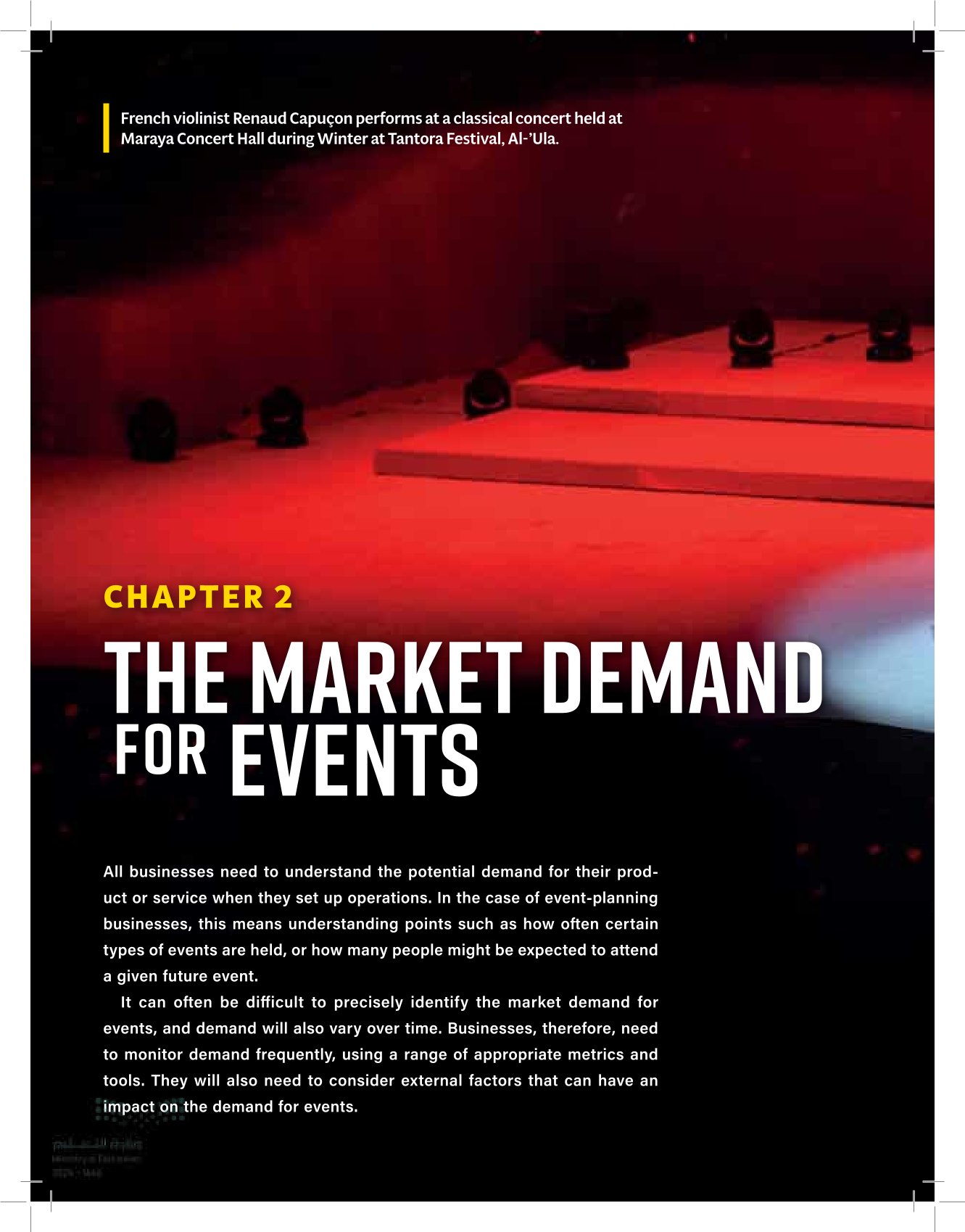
THE MARKET DEMAND for EVENTS
French violinist Renaud Capuqon performs at a classical concert held at Maraya Concert Hall during Winter at Tantora Festival, Al-'Ula
French violinist Renaud Capuqon performs at a classical concert held at Maraya Concert Hall during Winter at Tantora Festival, Al-'Ula

What factors can influence the demand for events
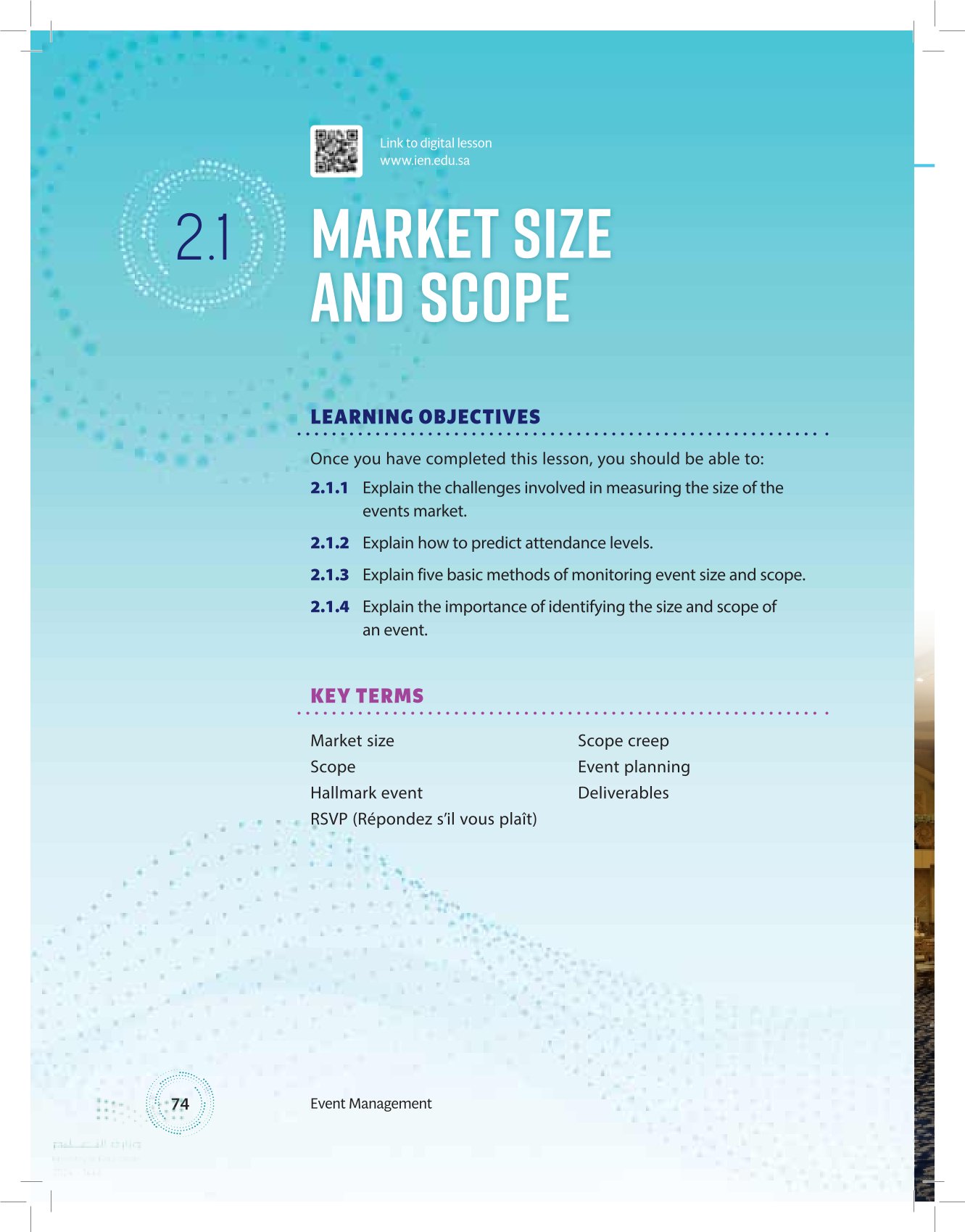
tOnce you have completed this lesson, you should be able to: Explain the challenges involved in measuring the size of the events marke
KEY TERMS Market size

Challenges Involved in Measuring the Events Market
What data could be used to estimate the size of the wedding market in Saudi Arabia

The Market Size of Events
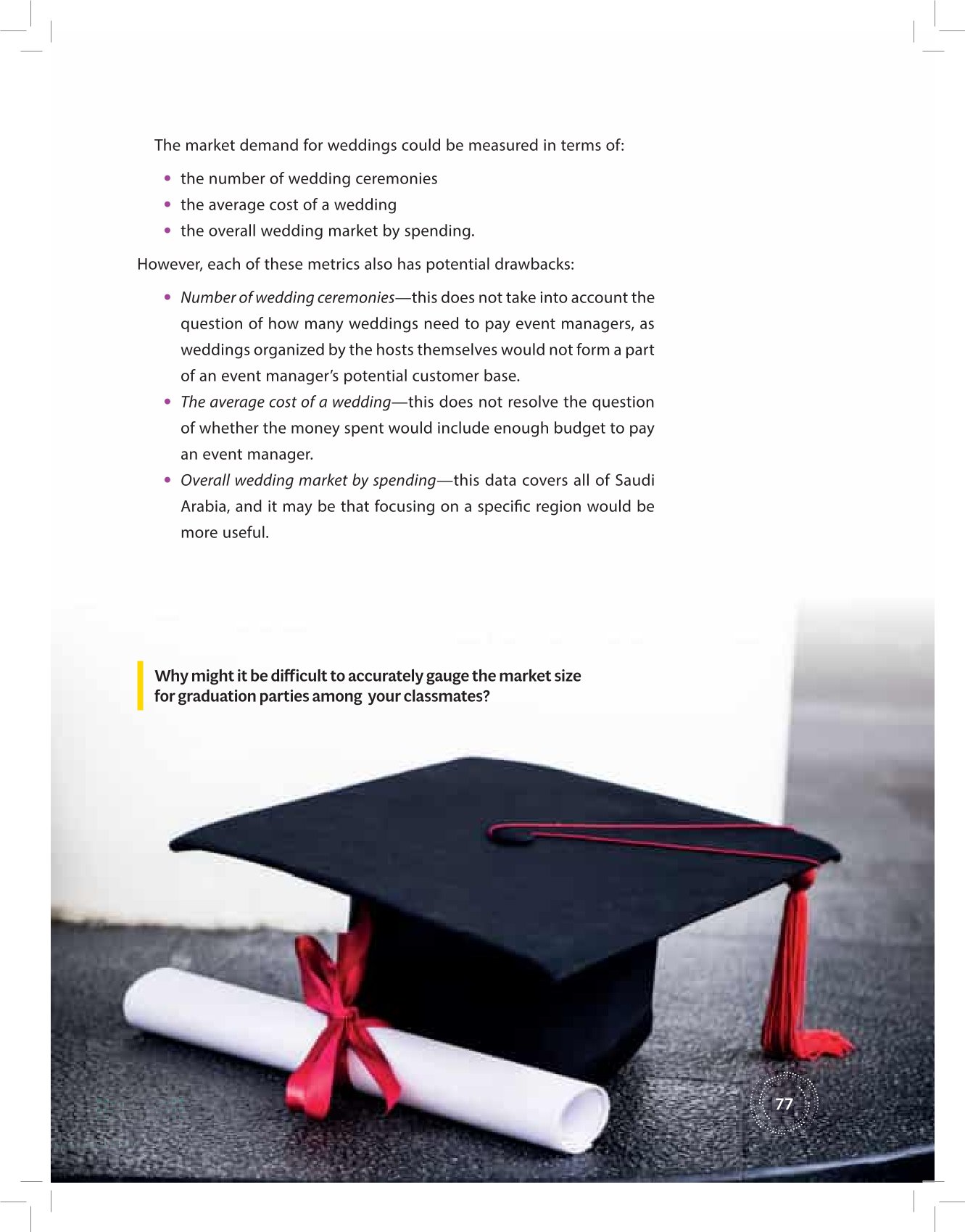
The market demand for weddings could be measured in terms of
However, each of these metrics also has potential drawbacks:
Why might it be difficult to accurately gauge the market size for graduation parties among your classmates
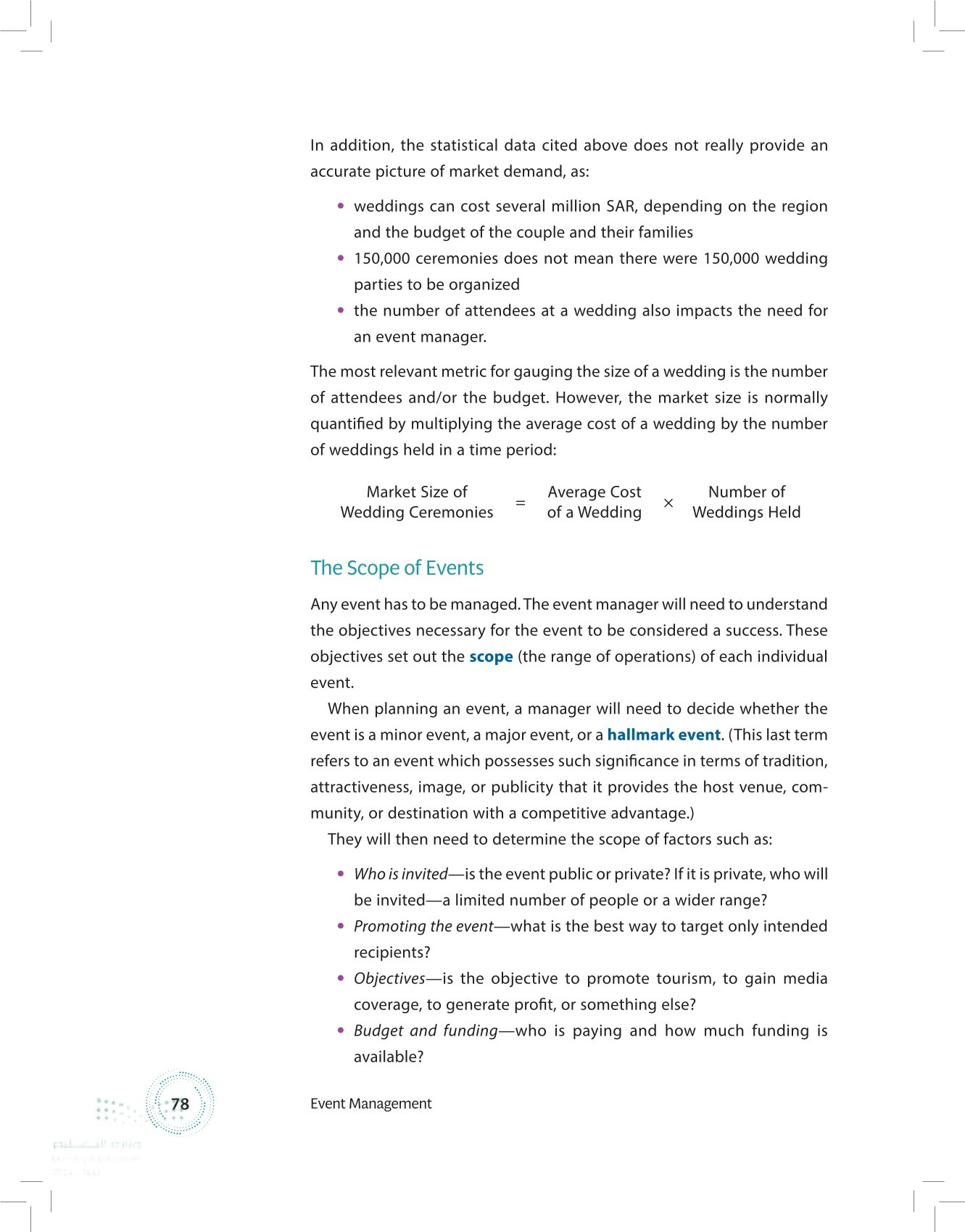
the statistical data cited above does not really provide an accurate picture of market demand, as
The Scope of Events

Social media usage—is the event local
Market Research
Why is it important for event managers to understand the size and scope of the events market

Predicting Attendance Levels
What methods could an event manager use to predict attendance at a major National Day event

ways an event manager may be able to predict attendance levels
Why is there more than one method of predicting future attendance levels
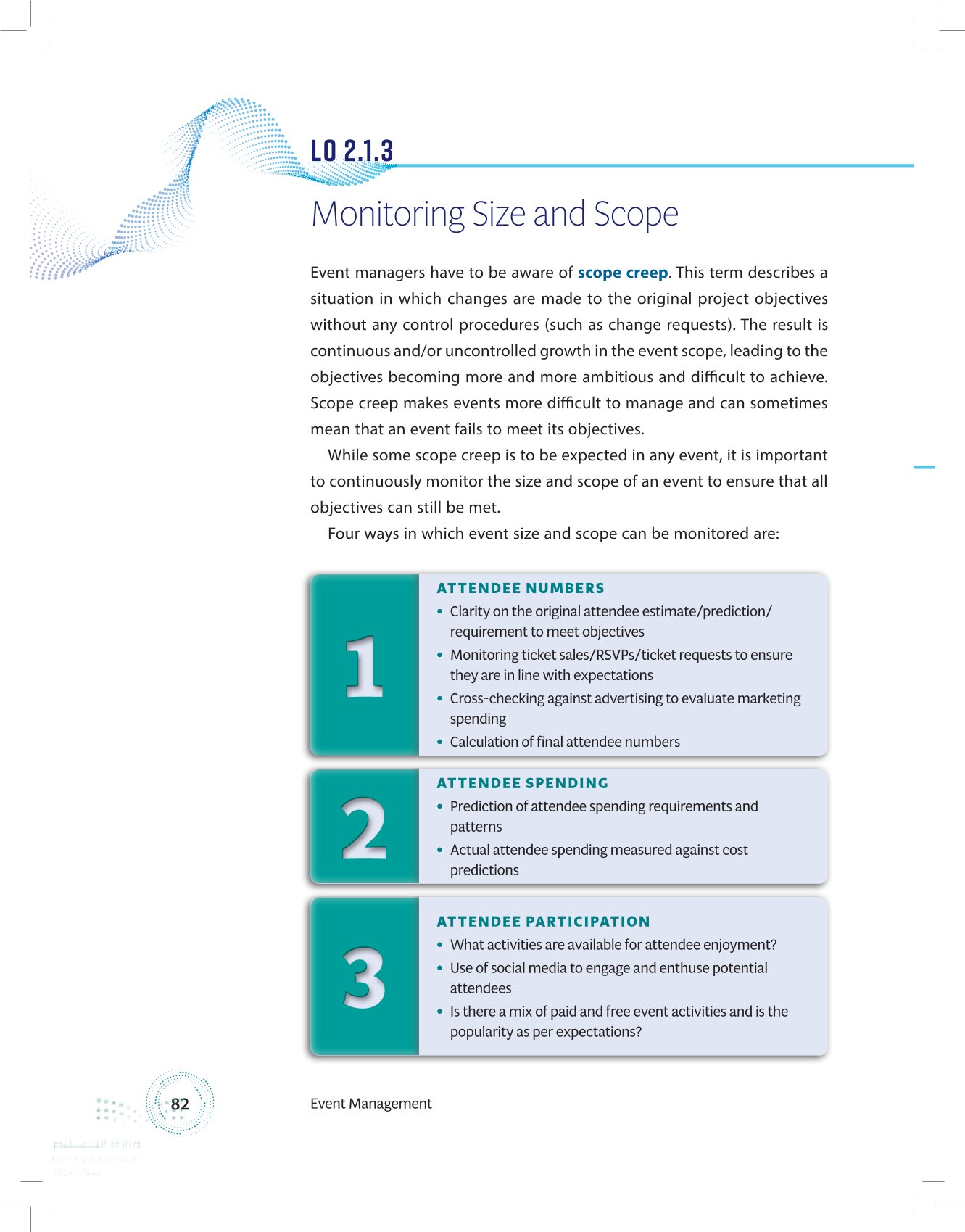
Monitoring Size and Scope
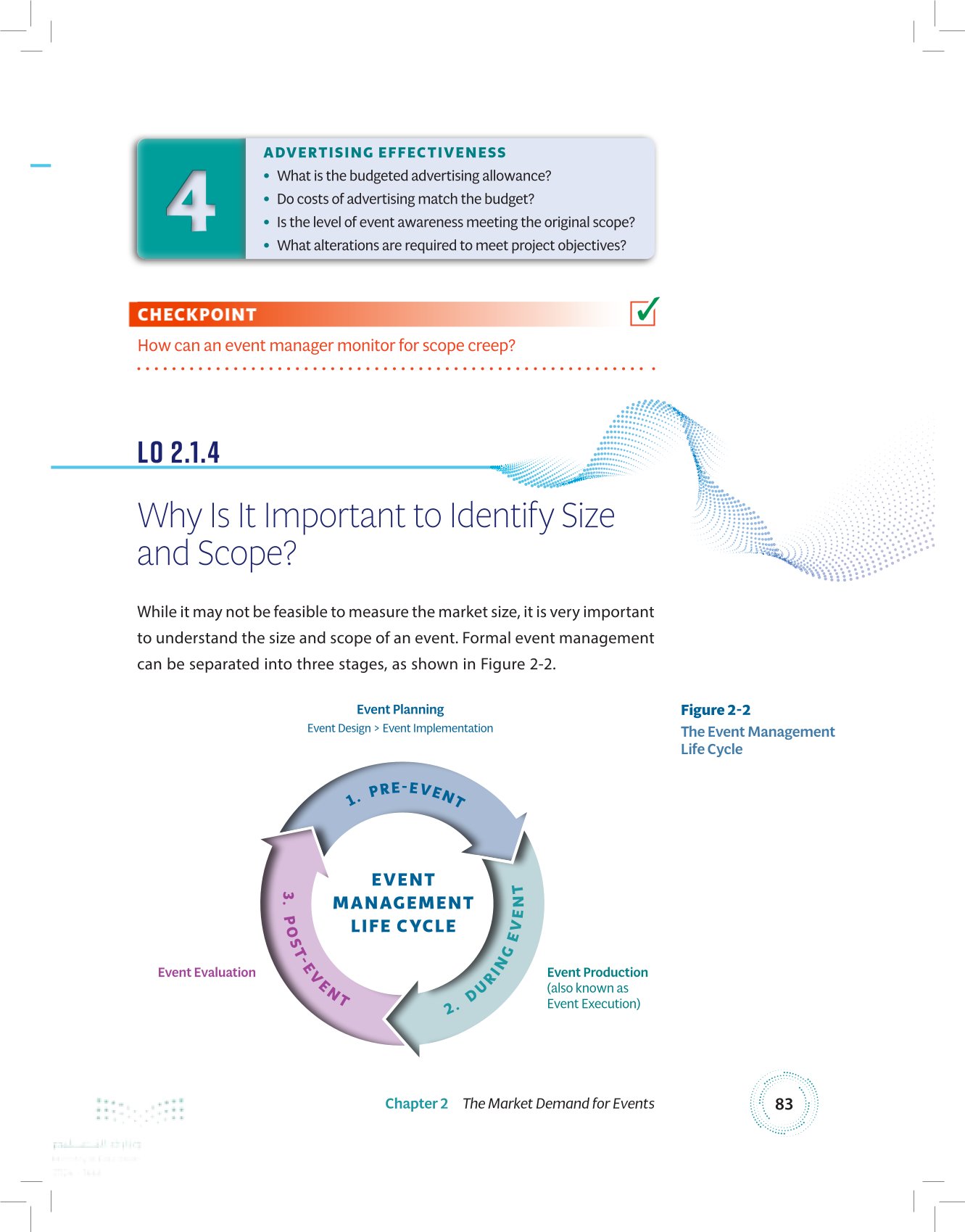
ADVERTISING EFFECTIVENESS
How can an event manager monitor for scope creep
Why Is It Important to Identify Size and Scope

event planning
Work Breakdown and Feasibility
Risk Management and Lack of Resources
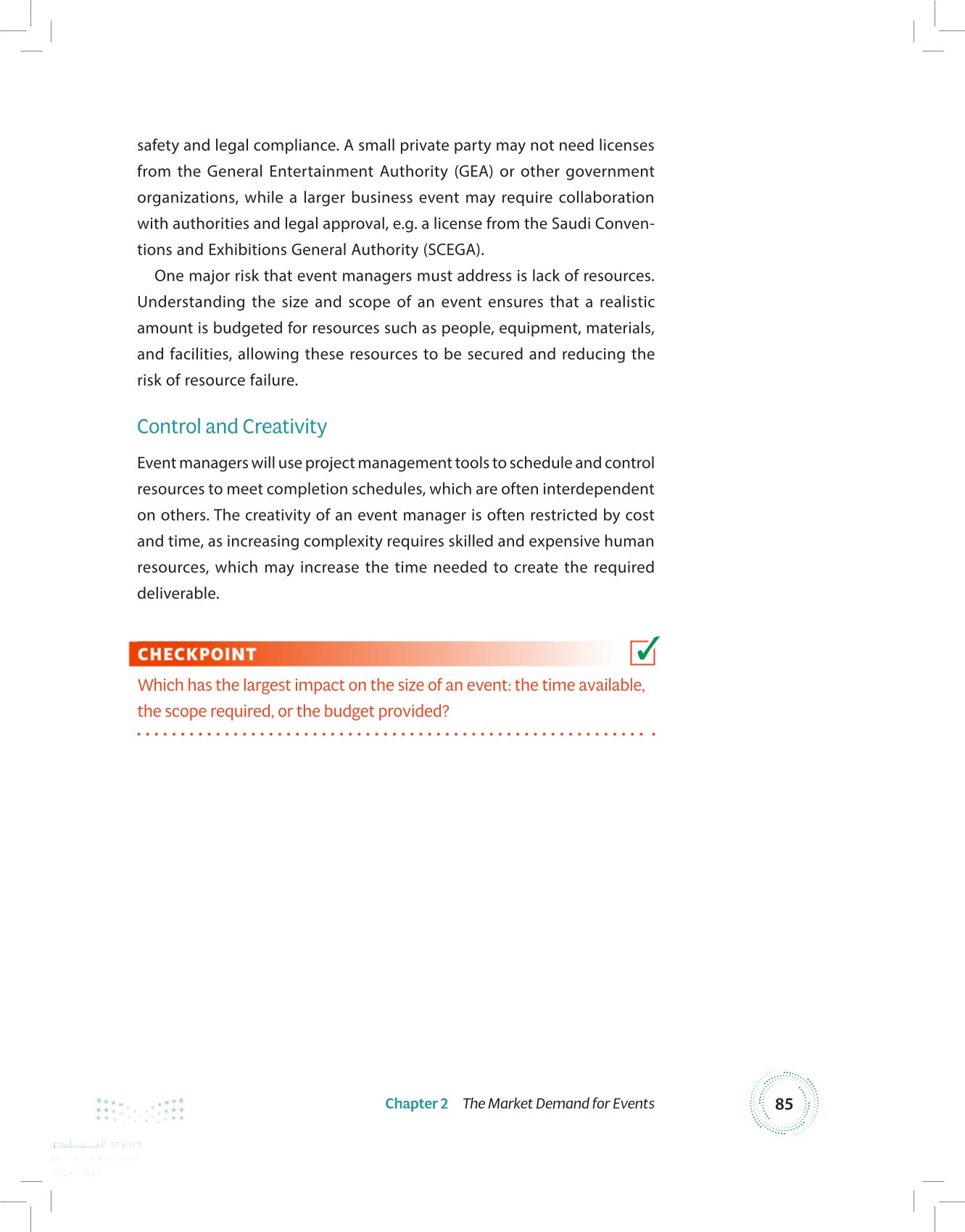
General Entertainment Authority
Control and Creativity
Which has the largest impact on the size of an event: the time available, the scope required, or the budget provided
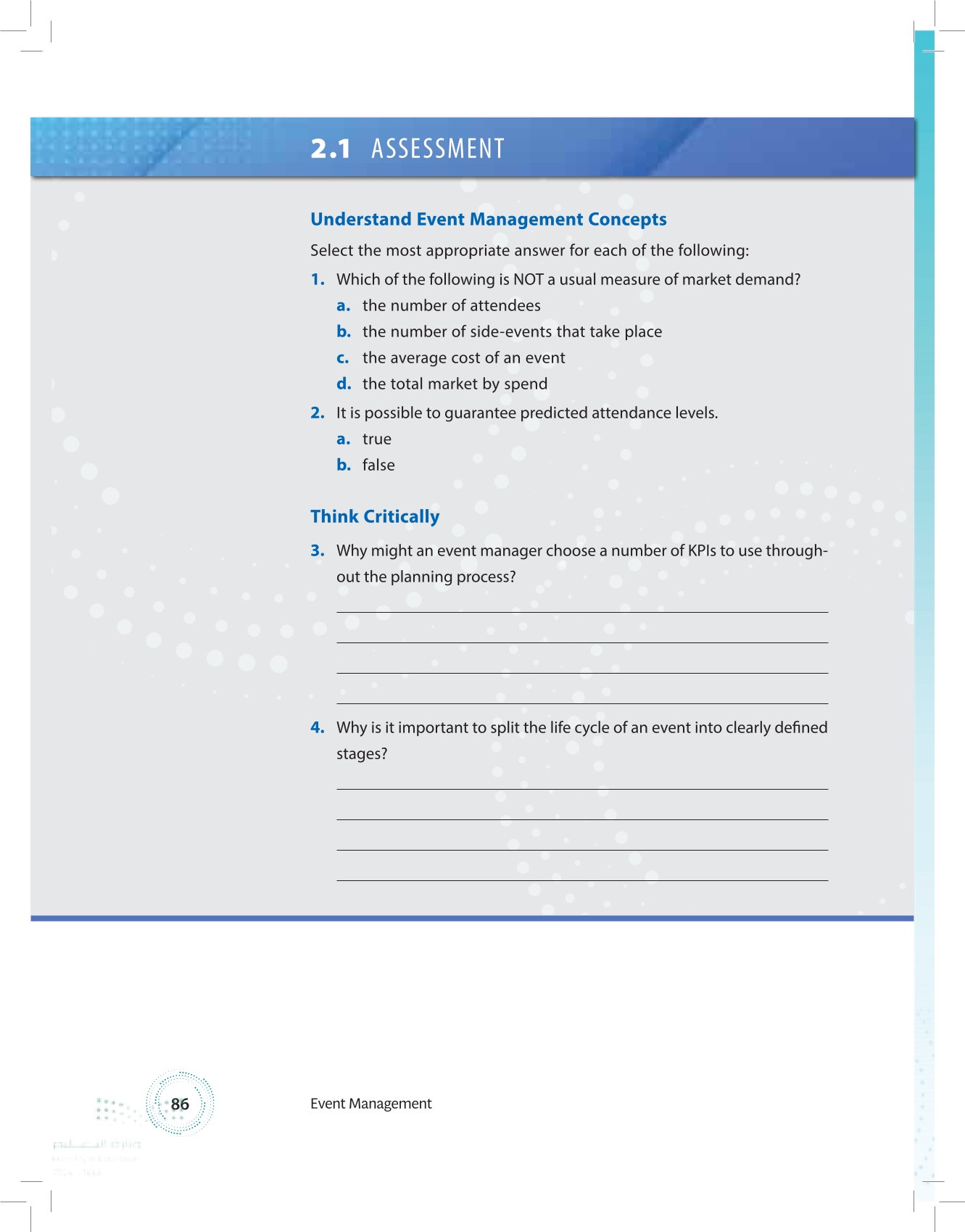
Select the most appropriate answer for each of the following: Which of the following is NOT a usual measure of market demand
Why might an event manager choose a number of KPIs to use throughout the planning process
. Why is it important to split the life cycle of an event into clearly defined stages






